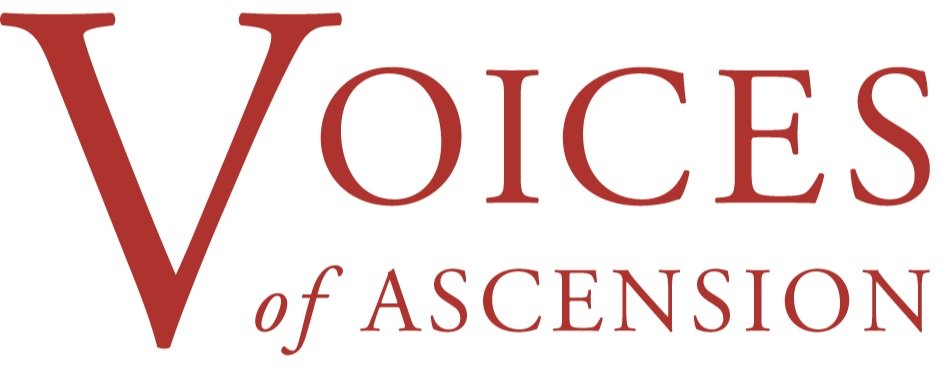Voices of Connection: 08/29 A Week of Early Music from Latin America
VOICES WELCOMES GUEST CURATOR SEBASTIÁN ZUBIETA
Sebastián Zubieta has been Music Director at Americas Society since 2005. He is also a composer and the conductor of the vocal ensemble Meridionalis, with which he has performed contemporary and early music in the United States and Latin America. The ensemble gave the Latin American and NYC premieres of Claude Vivier’s opera Kopernikus in 2018 and 2019, and released its debut album on NAXOS in 2019. He has presented papers on baroque and contemporary music in the United States, Belgium, Japan, and Argentina. His music has been performed in concerts and festivals in Argentina, Europe and the United States. READ MORE
JUAN GARCÍA DE ZÉSPEDES: CONVIDANDO ESTÁ LA NOCHE
Americas Society is dedicated to promoting dialogue between the US and the rest of the western hemisphere, so most of my musical activity, and the videos I chose for this week, feature music or musicians from the region, taken from concerts in our Music of the Americas series. Western, classical vocal music of the kind ensembles like VoA sing every day has been created and performed throughout the Americas since not long after the arrival of the first colonizers in the 16th century, in particular in Latin America. Choral music was, as we know, an important component of Catholic liturgy, so musical institutions were usually organized shortly after the foundations of cathedrals and churches. Most of the surviving baroque and classical repertoire found in the region is religious, created over the centuries by thousands of Indigenous, African, creole, and European composers and performers, free and enslaved, who made music in an extensive, interconnected musical world encompassing cities, villages, missions, and convents. The conservation of music manuscripts is always subject to the vagaries of musical taste and to the damaging effects of humidity, vermin, and conflict, but painstaking work done in archives from Mexico to Argentina over the past fifty years has revealed a treasure trove of beautiful music in Latin, Spanish, and several Indigenous languages (a not insignificant part of the appeal of choral music for the Church was its evangelizing power). Non-liturgical choral repertoire grew significantly over the twentieth and twenty-first centuries.
During this week, we will share recordings of early music from Latin America by Ars Longa de La Habana and the Bolivian ensemble Arakaendar, alongside recordings by Americas Society’s own ensemble, Meridionalis.
The first video features Cuban ensemble Ars Longa de La Habana. Ars Longa is one of the preeminent early music ensembles in Latin America, with a career spanning over 20 years of excellent and imaginative programming. I had seen them live in Ecuador in 2011 and in 2014 at the church of Saint Francis of Assisi in Old Havana, and had wanted to bring them to the US for some time. We were finally able to organize two tours of the US, in 2017 and 2018 (a third visit was postponed due to the pandemic). For the second tour, which took them to NYC, Dallas, Pittsburgh, and Westport, they traveled with 5 singers, 2 violins, 2 oboes, and a continuo section of guitar, harp, and violone. Their concert in NY was part of the GEMAS series, which is organized by Americas Society and Gotham Early Music Scene, and curated by myself and Nell Snaidas. It took place at St. Paul’s Chapel at Columbia University, a beautiful hall for choral concerts.
The concert concluded with Convidando está la noche (The Night Invites Us), by Mexican composer Juan García de Zéspedes (Puebla, ca.1619-1678). This one of just a handful of pieces by Zéspedes that have reached us, which is too bad, because he was a wonderful composer with a great melodic and dramatic gift. He spent his career at different posts at the cathedral in Puebla, from choirboy to Kapellmeister, a position to which he was appointed in 1664 and held until his death. Convidando… is a mini-Christmas play in two distinctive sections, a lyrical one that sets the scene and tells us that a group of musicians will pay their respects to the newborn Christ dancing and singing a guaracha. The guaracha is a picaresque dance from Cuba, very popular in the Spanish baroque world, and this is its first known mention. The guaracha, like the chaconne and other dances, is built on a harmonic ostinato which, in Ars Longa’s hands, turns the story’s celebration into a dance party shared with the audience.
– Sebastiáno Zubieta

